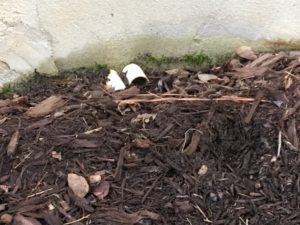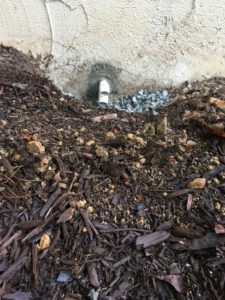Originally written in May 2014
Did you know you can open your garage door, even during a power outage? We certainly didn’t, and we weren’t able to help our neighbor when the power went out a couple of weeks ago. She had an important appointment but couldn’t get to her car because she couldn’t open her garage door. Thankfully, a knowledgeable Good Samaritan neighbor climbed through the garage window and pulled on the emergency release cable to unhook the door from the chain-driven trolley that electrically opens and closes the door. He then manually lifted the door open, and our neighbor was able to make her appointment.
What do you do if the garage window is inaccessible or you aren’t as spry as our Good Samaritan? It turns out you can open the garage door manually from the outside, subject to a couple of caveats explained in the next paragraph. You may have noticed on the outside of your garage door there is a keyhole lock high in the center of the door. Your garage door opener was designed so that the same key that opens the door by the electric power lift fits in that keyhole and turns a lock connected to the emergency release cable inside the garage. Turn the key a quarter of a turn and pull. The lock and the cable can be pulled out through the door. Once the slack is taken up in the cable, a good firm pull should release the trolley and the door can be lifted manually by pressing both hands against the door and pushing up. Once power is restored, activating the electric opener will cause the chain-driven trolley to move on its track and reconnect to the door.
If the key won’t turn the lock, try spraying a lubricant such as WD-40 or silicone spray into the keyhole. Gently working the key back and forth should loosen the mechanism enough to allow the key to turn. You may find, however, that the key won’t fit the lock. That could mean at some time in the past, the lock was changed. If you can’t find the correct key among that bag of miscellaneous “lost” keys you have been keeping (or if the lubricate doesn’t work), you need a new lock and cable set. A call to Berkeley Property Management (919-448-5150) will give you the name and number of the garage door company that can install a new lock and cable set. Then, come the next power outage, you’ll be able to reach your automobile, should you need to.
WSG Webmaster


